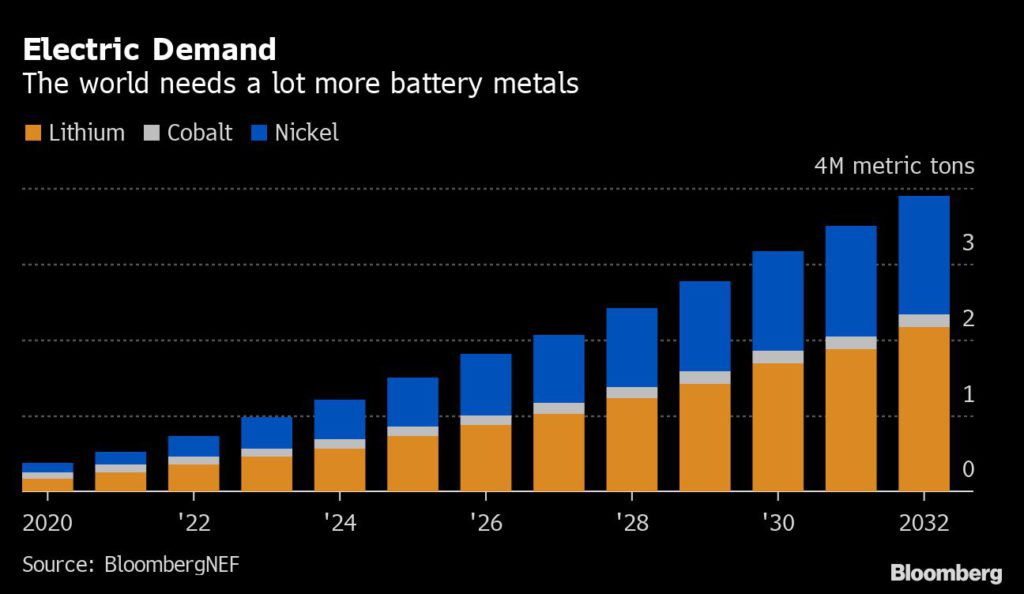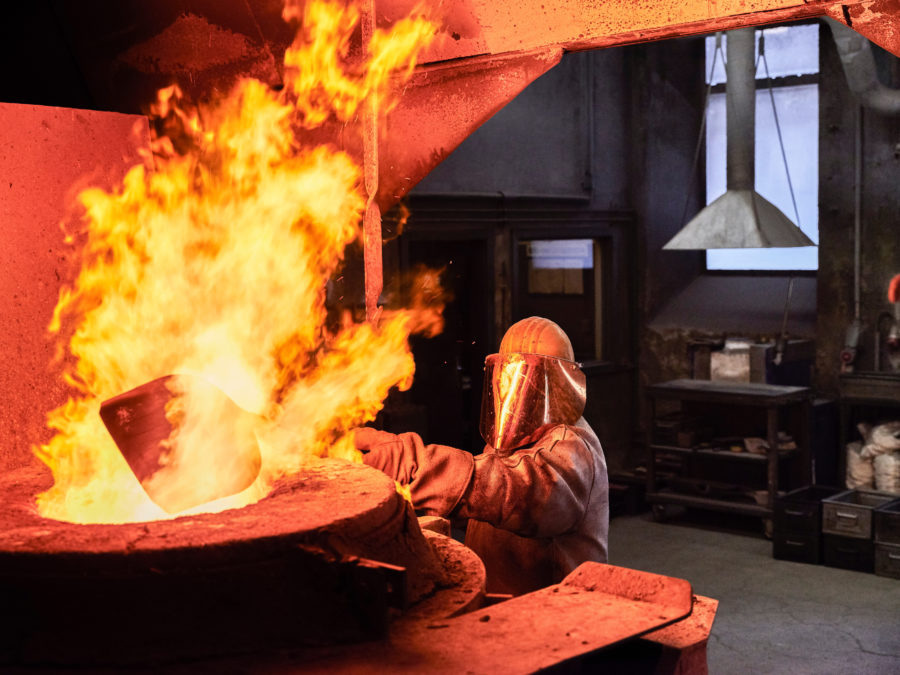The world wants more lithium but doesn’t want more mines

Prices for lithium, the building block of electric-vehicle batteries, shot to a record this year, amplifying concerns there won’t be enough of the metal to fuel the switch away from combustion engines. In that climate, now should be a prime time to build a mine.
Rio Tinto Group is finding out otherwise. Within months of unveiling plans for a $2.4 billion mine in western Serbia, local opponents organized a movement that’s rocked the government and brought cities to a standstill as thousands of protesters march in the streets. Authorities subsequently suspended a land-use plan for the proposed mine, though they didn’t reject the project completely.
“The entire Jadar project is just another way for multinational companies, with the help of our state, to make profit and cause damage to the people of Serbia,” said Slavisa Miletic, an activist living near the planned mine.
The opposition Rio faces is replicating around the world, and industry executives consider it their biggest challenge going forward. Southern Copper Corp. is struggling to get government support for a controversial $1.4 billion project in Peru, and Lithium Americas Corp. was taken to U.S. federal court over its planned mine in Nevada.
Historically, mining offered jobs and economic development to typically poor areas, with taxation and royalties to fill government coffers. But all too often, people living nearby paid a price for environmental degradation and occasional catastrophe.
That’s changing. Locals are pushing back, deciding that the economic benefits don’t outweigh the costs to their quality of life. Governments also are increasingly unwilling or unable to override those concerns.
“It’s become more difficult to build a mine today than it ever was before,” said Ben Davis, a mining analyst at Liberum. “It’s far easier to organize opposition, often in rural and isolated communities.”
To placate critics, the Serbian government offered a referendum on the mine, but that itself became controversial, with the opposition saying recent legal revisions tilted the balance in the government’s –- and Rio’s — favor.
Protesters also blasted an effort to speed up ownership changes for both state and private projects. The outrage forced President Aleksandar Vucic to send the proposal back to parliament for reworking.
“Environmental issues were long neglected in Serbia because the economy and living standard dominated for years,” said Bojan Klacar, director of the Belgrade-based Center for Free Elections and Democracy, or CESID. “Priorities have changed.”
A few thousand Serbians protested for the fourth weekend in several cities, demanding an unconditional ban on lithium exploration and mining by any company, not just Rio Tinto. At the largest rally, in the capital Belgrade, activists vowed to step up their protests if their demands are not met by next month.
When Rio, the world’s second-biggest miner, announced the project in July, it seemed like a slam dunk for new Chief Executive Officer Jakob Stausholm.
Lithium is a future-facing commodity critical for global decarbonization. The biggest automakers, from Tesla Inc. to Volkswagen AG to Toyota Motor Corp., need an ever-growing supply of battery materials to accelerate the roll-out of EVs, with BloombergNEF expecting demand for the minerals in lithium-ion packs to grow fivefold by 2030.

A global index of lithium prices has more than tripled this year, and BNEF forecasts that lithium-ion battery prices will increase next year for the first time since 2010.
Plus, the mine would be built on farmland, not virgin forest, and be just a 10-hour drive from Germany’s car-making epicenter. The project, which Rio says could create more than 2,000 jobs, is scheduled to open in 2026 and hit full production in 2029.
Yet that laundry list of supposed benefits doesn’t matter to many. Mining’s dark past includes a plethora of deadly disasters, from cyanide leaks to dam collapses.
Just last year, Rio’s CEO was forced out after the company destroyed an ancient Aboriginal site at Juukan Gorge in Australia.
“We do have a history of things in our organization that we’re not proud of, and Juukan is No. 1 on that list,” said Sinead Kaufman, head of the Rio unit planning to build the Serbian mine.
And it’s not just lithium that’s becoming problematic. Copper is an essential metal for the energy transition, with demand expected to grow by almost 50% in the next decade, according to Chilean miner Antofagasta Plc. Mines typically take about 15 years to go from discovery to production.
Even so, many of the best prospects are in limbo. Rio’s proposed Resolution copper mine in Arizona, which could satisfy a quarter of U.S. demand, is being reviewed by the federal government after opposition from the San Carlos Apache tribe, whose leader refused to meet Rio’s CEO earlier this year.
“Despite mining’s contribution to almost every aspect of modern life, the industry is still seen as one that takes more than it gives,” Mark Cutifani, CEO of Anglo American Plc, said in a speech in London this month.
Rio’s challenge now is to convince Serbs the Jadar mine won’t be like the mines of old. The company says it will be built to the highest standards, reuse nearly all its water, and use electric trucks.
“A mine that’s going to get built in the 2020s, that’s going to be around for decades, is going to look very different from something built 50 years ago, or even 20 years ago,” Rio’s Kaufman said. “That’s the message we need to get across.”
(By Thomas Biesheuvel and Misha Savic)
{{ commodity.name }}
{{ post.title }}
{{ post.date }}



5 Comments
Nikola Jokić
We dont want that mine, no thanks… Germany has more lithium than we do so they can build it themselfs if ita such a “great” thing!
Nevena
Exactly! There is Lithium in Western Europe, too. They can go dig in their own back yards if they want. But why pollute their soil and water, right?
Vladan
We don’t need that mine, we got uranium from you, and this is enough, gi arrange Germany or France, they got more lithium and more territory for your devastation or what ever you call your mining….
Rod McIntyre
The comic show begins. We’re being told that cars have to be electric for the environment. Wait a moment, EV batteries and the magnets for the EV drive motors require a number of minerals that have to be mined. LOTS of mines will be required to even get to 50% EVs. But don’t mine in our back yard, do it in someone elses. Hmm.
Rod McIntyre
This is good for our lithium shares. Lithium prices will increase due to insufficient supply v accelerating demand. Nice, thanks.